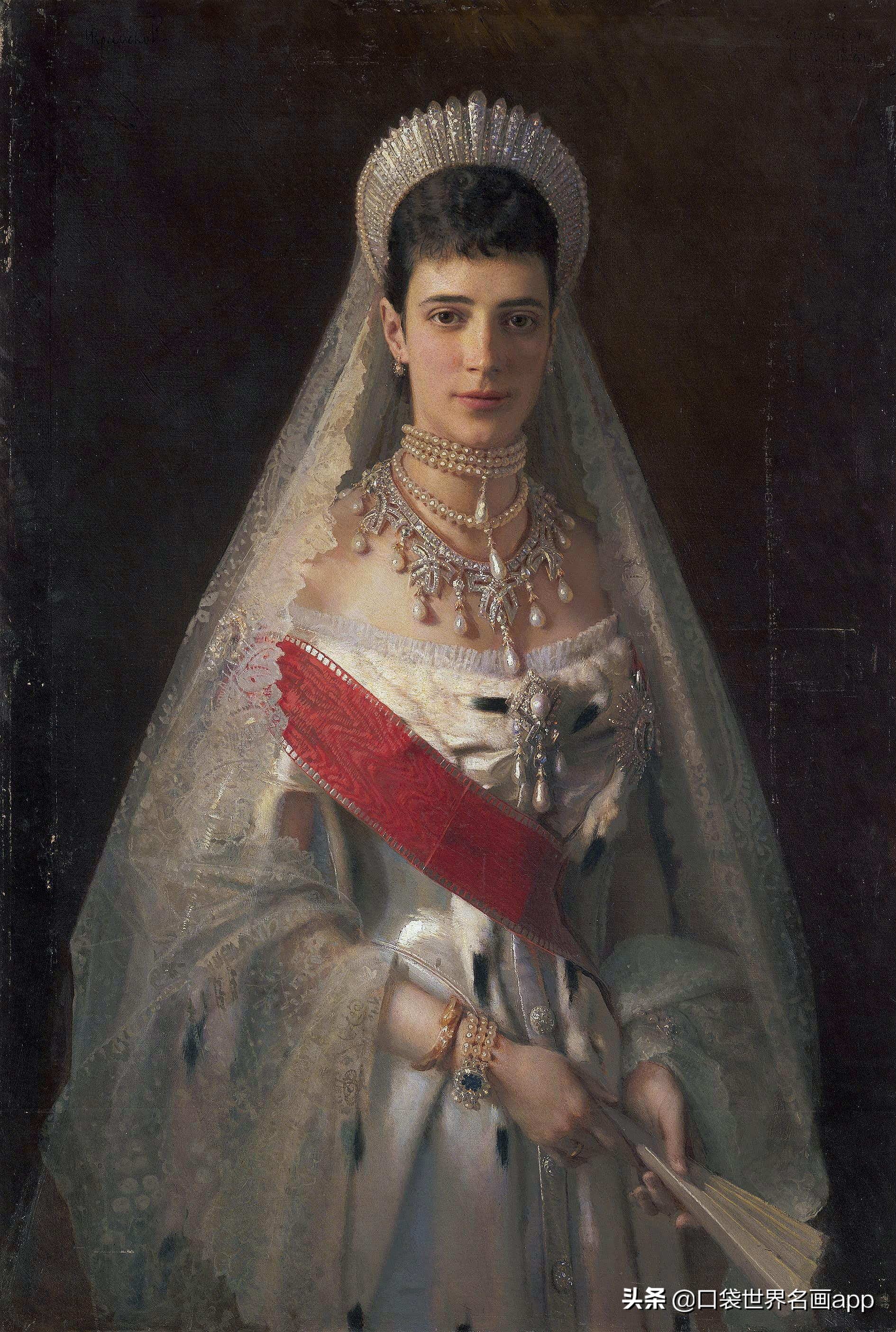
Portrait of Maria Fyodorovna is a portrait on canvas painted in 1881 by the famous Russian painter and art critic Ivan Kramskoi (Russian: Ивван Николаевич Крамскй), It is 1.09 meters high and 0.74 meters wide and is now in the collection of the Hermitage Museum in St. Petersburg, Russia.
The protagonist, Maria Fyodorovna (Russian: Мария Фёдоровна, Roman: Mariya Fyodorovna), born on 26 November 1847, was a Danish princess who was King Christian IX of Denmark (reigned 1863–1906) and Louise of Hesse-Kassel Hesse-Kassel's second daughter and fourth child, known as Princess Dagmar of Denmark, and her siblings include Queen Alexandra of the United Kingdom and King Frederick VIII of Denmark Denmark) and King George I of Greece.
In the summer of 1864, at the age of 17, Princess Degema became engaged to Crown Prince Nicholas of Russia. The following year, Crown Prince Nicolas died of illness in Paris, France. In 1866, the princess married Nikolai's younger brother Alexander, later Tsar Alexander III of Russia. After the marriage, Princess Degmar changed her name to Maria Fyodorovna and had 4 sons and 2 daughters, and her eldest son became the last Russian monarch, the Russian Emperor Nicholas II.
Empress Maria Fyodorovna (1885)
Empress Maria Fyodorovna with her eldest son Nicholas (1870)
Maria Fyodorovna with her eldest son Nicholas II (1896)
In 1917, the revolution was introduced to Russia, and after the February Revolution, Nicholas II abdicated on March 15. Maria Fyodorovna traveled from Kiev to Mogilev to meet her deposed son Nicholas II, and Maria returned to Kiev. Later, persuaded by her family, she took refuge in Crimea by train with her daughter's husband, the Romanovs.
Maria received a report after Bolshevik officials killed Nicholas II and his immediate family in 1918. However, she couldn't believe it and thought it was a rumor. She held on to this belief until her death. The truth was too painful for her. In a surviving letter she wrote to her son Nicholas, she wrote: "You know that my thoughts and prayers will never leave you. I think about you day and night, sometimes it hurts, and I believe I can't stand it anymore. But God is merciful, and He will give us the strength to deal with this terrible test. ”
Although the monarchy had been overthrown, Maria at first refused to leave Russia. It was not until 1919, at the urging of her sister Queen Alexandra of England, that she reluctantly left Crimea. King George V sent the battleship HMS Marlborough across the Black Sea to pick up his aunt to London. She was accompanied by 17 members of the Romanov family, including her daughter, Grand Duchess Xenia, and Xenia's five sons.
In London, Maria lives with her sister Queen Alexandra. Although Queen Alexandra treated her sister well, Maria eventually returned to her native Denmark. After a brief life with her nephew King Christian X on a flank of Amalienborg, she chose the "White Gate (Hvidøre)" villa near Copenhagen as her permanent residence.
On October 13, 1928, Maria died at the age of 80 in the Villa "White Gate". She was buried in Roskilde Cathedral.
May there be peace in the world!
Say no to war!